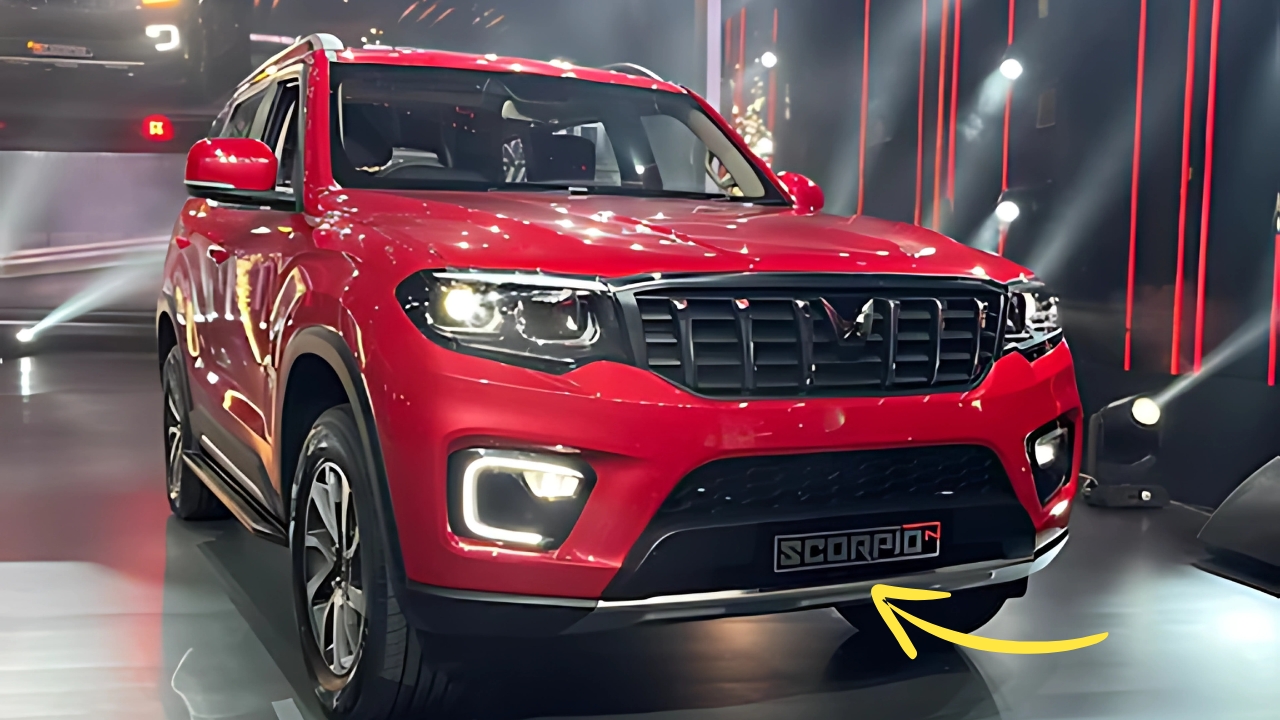Mahindra Scorpio N: Few vehicles embody the spirit of Indian automotive ambition quite like the Mahindra Scorpio. Since its original introduction in 2002, this homegrown SUV has maintained a distinctive position in the market – rugged enough for rural terrain yet increasingly sophisticated for urban customers.
The newest iteration, dubbed Scorpio N, represents the model’s most significant evolution yet, attempting to balance the nameplate’s hard-earned reputation for toughness with contemporary expectations of refinement.
Having spent ten days with the Z8L 4×4 automatic variant across varied terrain from city streets to moderately challenging off-road trails, I’ve formed distinct impressions about where this vehicle succeeds and where compromises remain evident.
Mahindra Scorpio N: Design Philosophy: Measured Modernization
The Scorpio N’s exterior design successfully walks the line between evolution and revolution. While clearly related to its predecessors, the overall aesthetic has matured significantly.
The front fascia features a more substantial six-slat grille flanked by dual-chamber LED headlamps that incorporate C-shaped daytime running lights – a contemporary touch that enhances recognition without abandoning the vehicle’s established identity. The muscular hood with its central power bulge maintains the commanding presence Scorpio owners expect.
In profile, the vehicle’s proportions reveal its body-on-frame construction through tall sides and substantial ground clearance, yet design elements like the chrome beltline and flush-fitting roof rails add visual sophistication absent in earlier generations.
The 18-inch alloy wheels on my test vehicle filled the arches effectively without appearing oversized for the vehicle’s purpose.
The rear design continues the evolutionary approach with vertically-oriented LED taillamps connected by a chrome strip bearing the Scorpio wordmark.
This arrangement maintains family resemblance while appearing more cohesive than the somewhat disjointed tail treatment of previous generations.
What impresses most about the design is its restraint. There’s no attempt to disguise the vehicle’s utilitarian underpinnings through over-styling or excessive adornment.
Instead, the design embraces the Scorpio’s functional nature while adding just enough contemporary elements to prevent it from appearing dated alongside newer competitors.
Cabin Transformation: Significant Progress
Step inside the Scorpio N, and the model’s most dramatic improvements become immediately apparent. The dashboard architecture adopts a horizontal orientation with a layered design that creates visual interest without appearing cluttered.
Material quality has seen substantial improvement, with soft-touch surfaces on the dashboard and door panels, leatherette upholstery on higher trims, and piano black accents that add visual sophistication.
The driving position offers good visibility through the expansive windshield and tall side glass, with power adjustment on higher trims providing customization for varied physiques.
The leather-wrapped steering wheel incorporates well-damped controls for audio, phone, and driver information functions, while the 8-inch touchscreen infotainment system occupies a prominent central position, supporting wireless Apple CarPlay and Android Auto connectivity.
Second-row accommodation impresses with generous headroom and adequate legroom for adult passengers, while the third row – though predictably tight for full-sized adults – proves usable for shorter journeys.
The six-seat configuration in my test vehicle featured captain’s chairs for the middle row, enhancing comfort for those passengers while easing access to the third row.
Storage solutions demonstrate practical consideration of real-world usage, with multiple cupholders, a reasonably sized glovebox, and door pockets that accommodate water bottles.
The 352-liter boot expands substantially with the third row folded, though the high load floor – a consequence of the body-on-frame design – requires more effort when loading heavier items compared to monocoque crossovers.
Dynamics: Balanced Capability
Under the hood, my test vehicle featured the more potent 2.0-liter mStallion turbocharged petrol engine producing 203 horsepower and 380 Nm of torque, paired with a six-speed automatic transmission.
This powerplant delivers impressive acceleration for a vehicle of this size and construction, with minimal turbo lag and a broad power band that provides confident overtaking capability.
The automatic transmission, while not the quickest-shifting unit in the segment, offers smooth operation well-suited to the vehicle’s character.
More surprising is the Scorpio N’s on-road manners. The new frequency-dependent dampers significantly improve ride quality over varied surfaces, absorbing urban road imperfections with impressive composure while maintaining stability during higher-speed highway driving.
Body roll during cornering, while still present as expected in a tall body-on-frame SUV, remains well-controlled and predictable – a significant improvement over previous generations.
Off-road capability benefits from the second-generation 4XPLOR four-wheel drive system with a proper low-range transfer case.
The system offers 4H, 4L, and selectable terrain modes that adjust throttle response and traction control intervention for different conditions.
During testing on moderately challenging trails, the Scorpio N demonstrated genuine capability, with the 235mm ground clearance, 29-degree approach angle, and 23-degree departure angle allowing confident navigation of obstacles that would defeat most urban crossovers.
The electronic power steering deserves specific mention for its calibration – light enough for easy maneuverability in tight spaces yet with progressive weighting that creates confidence at highway speeds.
This represents a significant improvement over the hydraulic systems of previous generations, which required more effort during low-speed operations like parking.
Technological Integration: Contemporary Conveniences
The Scorpio N incorporates technology packages appropriate for its market positioning. The 8-inch touchscreen offers reasonable response times and intuitive menu structures, while the wireless smartphone integration functions reliably once initial pairing is complete.
The 12-speaker Sony audio system delivers impressive sound quality with adequate bass response and clear vocal reproduction.
Driver assistance features include six airbags, electronic stability control, hill-hold and hill-descent control, and a rear parking camera with dynamic guidelines.
While not offering the more advanced ADAS features found in some monocoque competitors, this safety package addresses fundamental concerns appropriate for the vehicle’s likely usage patterns.
The AdrenoX connected car technology enables remote engine start, climate control adjustment, vehicle location, and various diagnostic features through a smartphone app.
This functionality, once limited to premium segments, enhances ownership convenience while providing peace of mind regarding vehicle status.
Mahindra Scorpio N: Authentic Progress
The Mahindra Scorpio N ultimately succeeds by respecting its heritage while making meaningful improvements in areas that matter most to contemporary buyers.
Rather than attempting to reinvent itself as something it’s not – like a soft-road crossover – it embraces its body-on-frame construction and genuine capability while significantly enhancing refinement, technology, and on-road behavior.
For buyers seeking a vehicle that can handle genuine off-road challenges while providing reasonable on-road comfort and modern amenities, the Scorpio N makes a compelling case against both traditional competitors like the Tata Safari and monocoque crossovers that prioritize on-road dynamics at the expense of capability.
In maintaining its authentic character while addressing previous shortcomings, Mahindra has created a worthy evolution of one of India’s most distinctive automotive nameplates.










